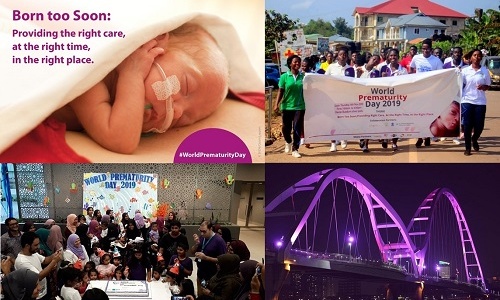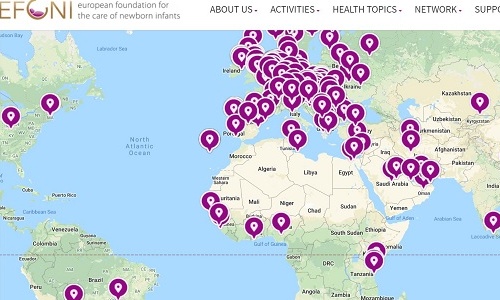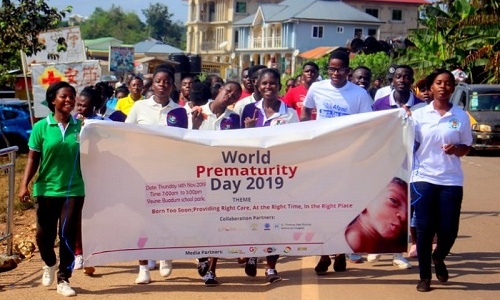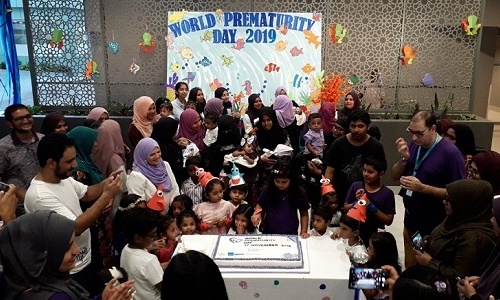Born Too Soon: Providing the right care, at the right time, in the right place
Worldwide, about 15 million babies are born preterm every year.[1] That means approximately a baby out of 10 is a preterm baby and the numbers are rising. With the complications resulting from preterm birth being the leading cause of death among children under 5 years of age, which account for 1 million deaths per annum, preterm birth is a global, pressing issue. It puts emotional and economic pressure on the families and takes its toll on society. On World Prematurity Day, a community of parents, former preterm babies, medical professionals, researchers, non-governmental organizations and many more take the opportunity to promote and protect the rights of babies born too soon and their families.
This year’s World Prematurity Day theme was: “Born too Soon: Providing the right care, at the right time, in the right place.” The claim was chosen as it addresses the principles of high-quality newborn care including the interest of all: the patients, the parents and the caregivers. The ‘Born too Soon’ claim pointed out specific problems within the spectrum of reproductive health, antenatal and neonatal care, but also offered solutions. It also reflects the findings and messages from the Survive and Thrive: Transforming Care for Every Small and Sick Newborn report, which was released earlier this year. Campaign materials were developed to provide insights and supporting evidence, and to facilitate messaging for individual campaigns and the media. Click here for more information.
The claim echoed throughout the world. Non-governmental, parent and patient organizations, as well as individuals from all continents joined forces for preterm babies and their families. So far activities in more than 100 countries have been registered. Some events called for political change, others wanted to thank those who provide life-saving care in neonatal intensive care units (NICU) on a daily basis. Charity events and concerts, medical conferences, political debates, press conferences, awareness marches, flash mobs and more than 230 purple lightings of buildings and landmarks were registered. Last but not least: social media postings reaching millions of people, making World Prematurity Day a remarkable example of community power.
#WorldPrematurityDay got mentioned 146,000, with a Facebook reach of 545,500
With the overwhelming support and commitment observed in this year’s World Prematurity Day, it is only possible to summarize a small portion of all activities and global engagement. Parent and patient organizations, in collaboration with local hospitals, organized charity events in clinics where parents, patients and members of the medical staff celebrated together. Others held medical symposia like the one organized in Ireland by the Irish Neonatal Health Alliance (INHA), in Taiwan by the Premature Baby Foundation, and in the Maldives by the Indira Gandhi Memorial Hospital .
in Ghana, the African Foundation for Premature Babies and Neonatal Care (AFPNC) organized a community durbar, a social gathering where they provided information about reproductive health and donated newborn utensils to preterm mothers in need. In Tanzania, the Doris Mollel Foundation combined awareness for preterm birth and Kangaroo Mother Care with the demand for extended maternity leave. In Ukraine, a flash mob was organized by the national parent organization “Early birds.” NICU staff, parents and other supporters folded 20,000 origami cranes in purple shades, representing the number of preterm babies born in Ukraine each year. Also on the Arabian Peninsula, celebrations and a large press coverage were dedicated to the cause of preterm birth.
Thanks go to everyone who joined World Prematurity Day! Creating public awareness for the cause of preterm birth can influence priority setting and decision-makers, placing newborn and maternal health front and center on the global political agenda. This is a must if the Sustainable Developmental Goal of reducing infant and maternal mortality is to be met by 2030.
Click here for an overview of the global activities. For more information about World Prematurity Day, check the EFCNI website.
[1] WHO; https://www.who.int/news-room/fact-sheets/detail/preterm-birth (26.11.2019).
Your World Prematurity Day event is missing? Please send pictures, or a short summary to worldprematurityday@efcni.org. You can also contact this email if you would like to join next year’s World Prematurity Day Coordinating Committee.




